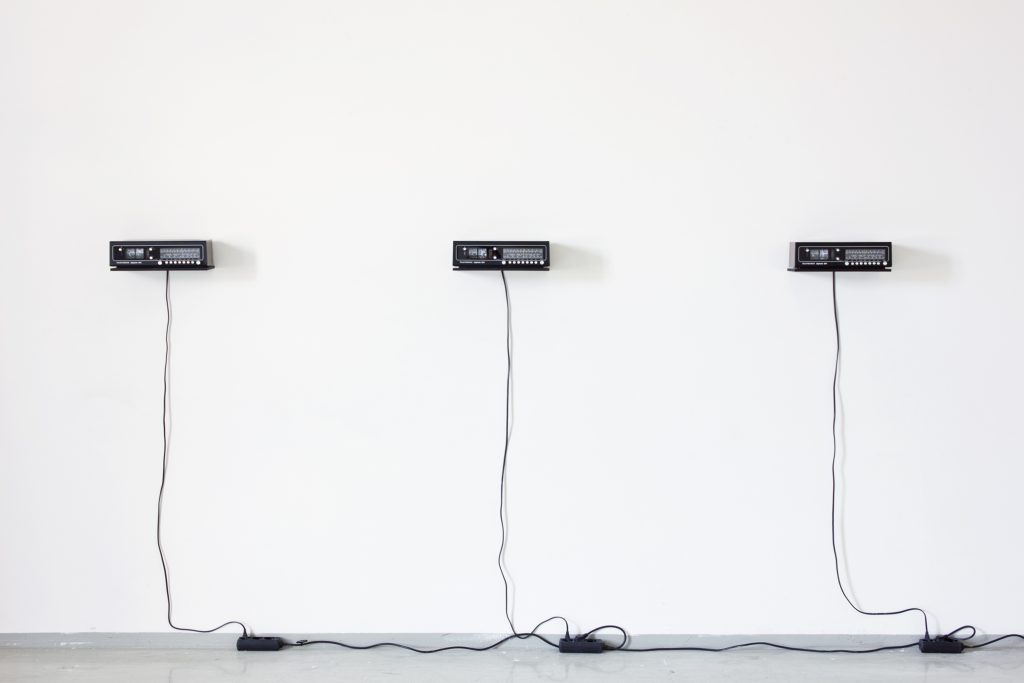Telefunken digitale 201
|
Installation / 3 modified alarm clocks / 234 x 155 x 17 cm / 2016
Instead of the time, a hurdles loop can be seen on the mechanism of the Telefunken alarm clock radio with an analog flip number-time display (Flip Clock) which was manufactured from 1973 to 1987. With about 8 pictures per second a “film“ in slow motion has been generated.
The images were taken from a YouTube video in which hurdles / hurdlers got filmed with a mobile camera, positioned at running height. From this a film loop was constructed and negatively copied to very thin films in black and white. The resulting 60 frames were transferred to the flip-platelet. This work combines the two components of the Time and Motion Studies, which emerged as a combination of Frederick W. Taylor‘s time studies and Frank & Lillian Gilbreth‘s motion studies in 1910. In the direction of the camera, everyday work processes, such as a bricklayer’s field of activity or household tasks were recorded with a calibrated clock. The aim of these recordings was to establish a standard time by visualizing the time saving by the “only correct work motion“ and the “only correct standardized workflow“. Transferred to the present time, this development manifests itself in the ideals of the neoliberal dictum: Constant retrieval and operational readiness as well as the demand for maximum performance with continuous self-optimization of the individual.
|

